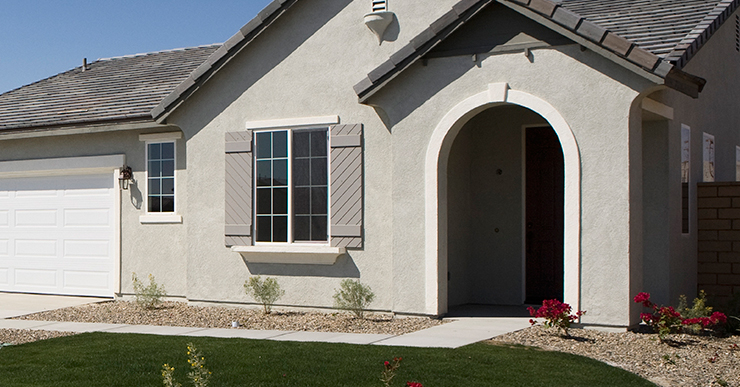A great write-up by Chuck Bickford which describes useful information concerning home windows with ideas for most home owners. Hope you enjoy.
Pinpoint and Plug Air Leaks
Now that temperatures are dipping, search for spots where your home is losing its heat.
Check for drafts
Dana Schiffman
Wet one hand and run it around windows, doors, and heating-duct joints—the moisture will make it more sensitive to cold air. You can also light a stick of incense and see if the smoke changes direction as you move it along the same pathways. To close gaps around windows and doors, use adhesive-backed EPDM rubber or foam weatherstripping (shown: M-D Window Seal Foam, from $4.18 for a 10-foot roll; lowes.com). Add an insulating sweep on any drafty door bottoms. Patch leaky seams in ductwork with HVAC foil tape.
Evaluate attic insulation
Old insulation may be compressed or have fallen out of framing bays, leaving bare spots. Thin R-19 batts should be upgraded to at least R-38 batts, or R-49 if you live in northern regions. Use canned urethane spray foam to insulate around pipes and cables where they enter the attic.
Schedule an energy audit
Find out if your local utility offers audits for free or at a low cost, or partners with a local company to do them. Prices range from about $100 for a walk-through and bill assessment to an average of about $400 for a more thorough investigation. Some utilities also offer free or discounted air-sealing materials and rebates for energy-saving upgrades such as insulation, air sealing, and energy-efficient appliances. For more information on energy audits, go to: energy.gov/energysaver/home-energy-assessments.
Avoid a Burst Pipe
If the temperature falls below freezing for a few days and plumbing runs up a poorly insulated exterior wall, pipes can freeze, blocking the flow of water—you turn on the faucet, and nothing comes out. Worse yet, over time, a frozen pipe can burst. Here’s how to thaw one out to prevent that:
- With the faucet handles open, feel along the exposed pipe to locate the frozen section; the pipe will be extremely cold and may have condensation or even ice on its surface.
- If it’s below the sink, open cabinet doors to let room-temperature air warm the interior.
- If that doesn’t do the trick, or the pipe is in an unfinished basement, place a space heater nearby or direct a hair dryer or heat gun onto the frozen area; never use an open flame, which can set fire to nearby trim or wood framing.
Beware of Floods
Courtesy Moen
Gutters overflow…pipes fail… water heaters can spring a leak. Many things can increase the risk of a basement flood. Installing water alarms on the floor near potential sources can warn you of a deluge before it gets too deep.
These automatic sensors are relatively inexpensive (some cost less than $20), are easy to set up, and will detect as little as 1/32 inch of water. More expensive versions come in multiples and send notifications to your smartphone via Wi-Fi (shown: Flo by Moen Smart Leak Detector, $130 for three; homedepot.com).
Give Your Oven a Fresh Start
iStock
Holiday meals give your oven a workout, so clean it now before the stuffing hits the pan. Commercial cleaners can be caustic, and if there’s a lot of buildup in the oven, the self-cleaning option can get smoky—and even trip the safety on the appliance’s thermostat. Try this safer, effective fix instead:
Act Now to Prevent Potholes
When water seeps into crevices in an asphalt driveway and freezes, it expands, enlarging the cracks and sometimes birthing potholes in the process. Uneven surfaces pose a trip hazard and can catch the blade of a snowplow, causing even more damage. To bridge driveway cracks, use a rope-like asphalt crack filler (available at home centers): After cleaning out any loose debris and pushing the rope into the crack, bond it to the asphalt with a propane torch or a heat gun. For divots deeper than 1 inch, try a ready-mix blacktop repair compound: Overfill the area by about 1 inch, then tamp it level with the surrounding surface.
Upgrade to a Plug-in Generator
Courtesy Generac Power Systems
Portable gas-powered generators are great to have when a storm takes out your electricity, but running extension cords into the house from the outside can be a nuisance. Using a cord that’s undersized or in poor condition is a fire hazard.
Before the deep freeze takes hold, have an electrician connect a manual transfer switch panel to your main breaker panel; this allows you to power any of the most important circuits—furnace, water pump, and refrigerator, say—with the generator by just flipping a switch (shown: HomeLink 50A Manual Transfer Switch Kit with Aluminum PIB and Cord, from $800; generac.com). And remember: Always run a fuel-burning generator outdoors, never inside the house or garage, to avoid the risk of carbon monoxide poisoning.
The above post was published on this site.
Hope you found that useful content that they provided. Let me have your views just below, write a short comment and let us know what topics you would like covered in our articles.
You can find similar content on our main site here: surewindows.com

